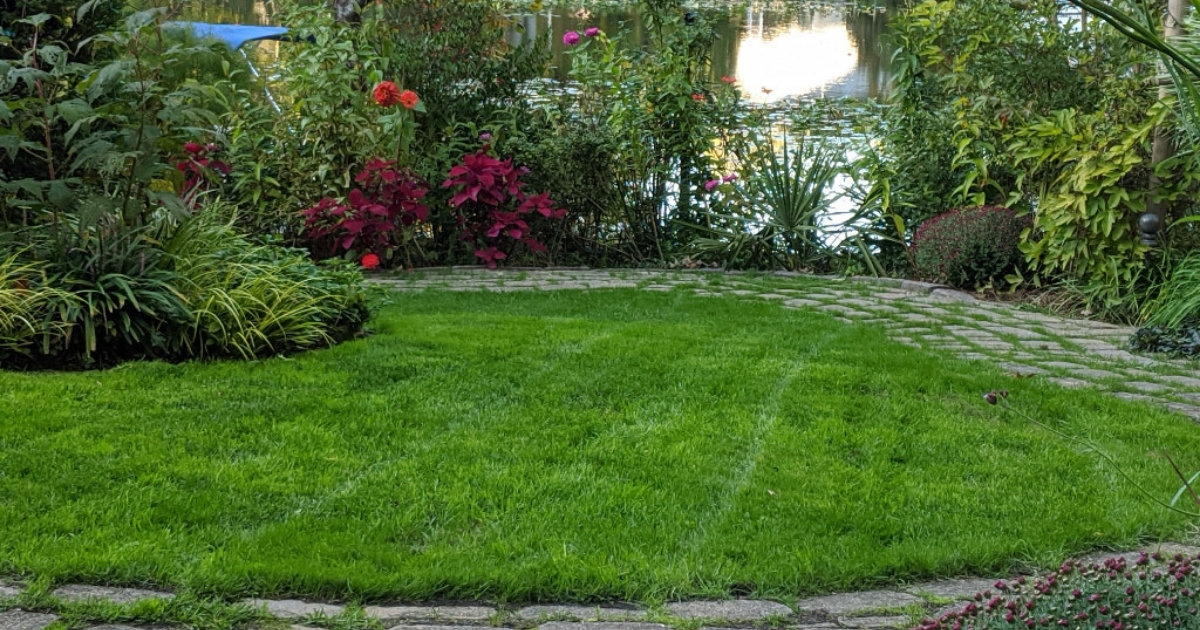
Category: Cooperative Extension

Adding Compost To Improve Turfgrass Quality
March 08, 2021 Written by John Emerson, Turfgrass Nutrient Management Extension Agent
Areas covered in turfgrass are often plagued with poor soil quality due to natural conditions (naturally sandy, low organic matter soils) or soil disturbance. Poor soil quality is especially common in residential housing developments, new golf courses or athletic fields, or construction sites due to cutting, filling and grading activities associated with development. In fact, it is common for top soils to be removed and soil structure to be compromised during the construction process resulting in a poor growing medium that is layered, compacted and contains very little organic matter (OM). Heavily disturbed soils pose a threat to turfgrass health and stand sustainability. Adding compost can go a long way to improving poor soil conditions and improving turf stand quality and hardiness.
Compost has been exhaustively shown in the research literature to improve the soil's physical, chemical and biological properties. Benefits of compost application to soils include:
- Increased fertility and nutrient holding capacity
- Decreased compaction
- Increased organic matter (OM)
- Increased microbial activity and population diversity
- Increased water holding capacity and water infiltration
- Slowly released plant available nutrients
- Stabilized soil pH*
*Often, compost will have a pH of 7.5 or higher. Check your soil test to determine if sulfur applications may be warranted to mitigate the effects of raising the soil pH after a compost application.
Compost quality is variable, so choosing a suitable material is important. Compost composed of strictly animal products can contain high levels of soluble salts, which can inhibit turf growth and cause an onset of nutrient deficiencies or drought stress symptoms. When choosing a compost, look for products with a soluble salt content below 4 dS/m (4 mmhos/cm) to reduce leaf burn potential, nutrient deficiencies, or drying of turfgrass. High-quality compost should have a carbon to nitrogen (C:N) ratio below 30:1, which allows the material to be easily broken down by microbes. Composts with a C:N ratio above 30:1 can result in nitrogen tie-up when microbes steal the N in the compost and soils from plants to support their growth. If applying compost with a C:N ratio of higher than 30:1, you may need to add nitrogen to the system to avoid nitrogen deficiencies. Also, avoid composts with heavy metal concentrations that exceed federal standards. Information about compost composition, C:N ratio, soluble salt and heavy metals should be available on the producer's analysis sheet for bulk materials or the label of bagged materials.
Compost can be incorporated into the soil prior to seeding or sodding, or topdressed over existing turfgrass stands. If compost is applied before seeding or sodding, apply ½ - 1 inch of material and incorporate it into the soil to a depth of approximately 6 inches using a rototiller. If topdressing, apply ⅛ - ¼ inch of compost evenly over the existing stand and rake or drag the area to work the compost into the turf canopy. Consider aerating existing turf stands before topdressing compost, as the compost can fall into aeration holes and get incorporated into the soil. Raking or dragging an area where compost was topdressed following aeration will also help break up the soil plugs that were removed during aeration and create a smoother surface.
